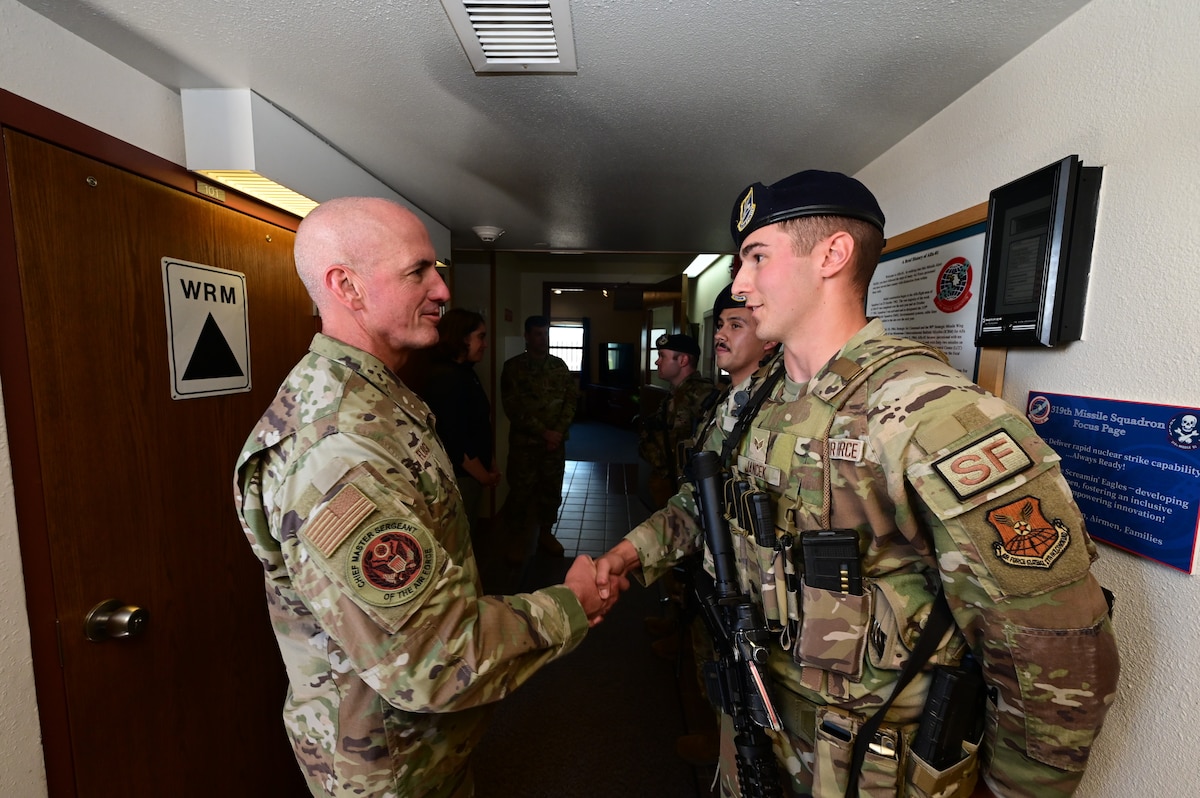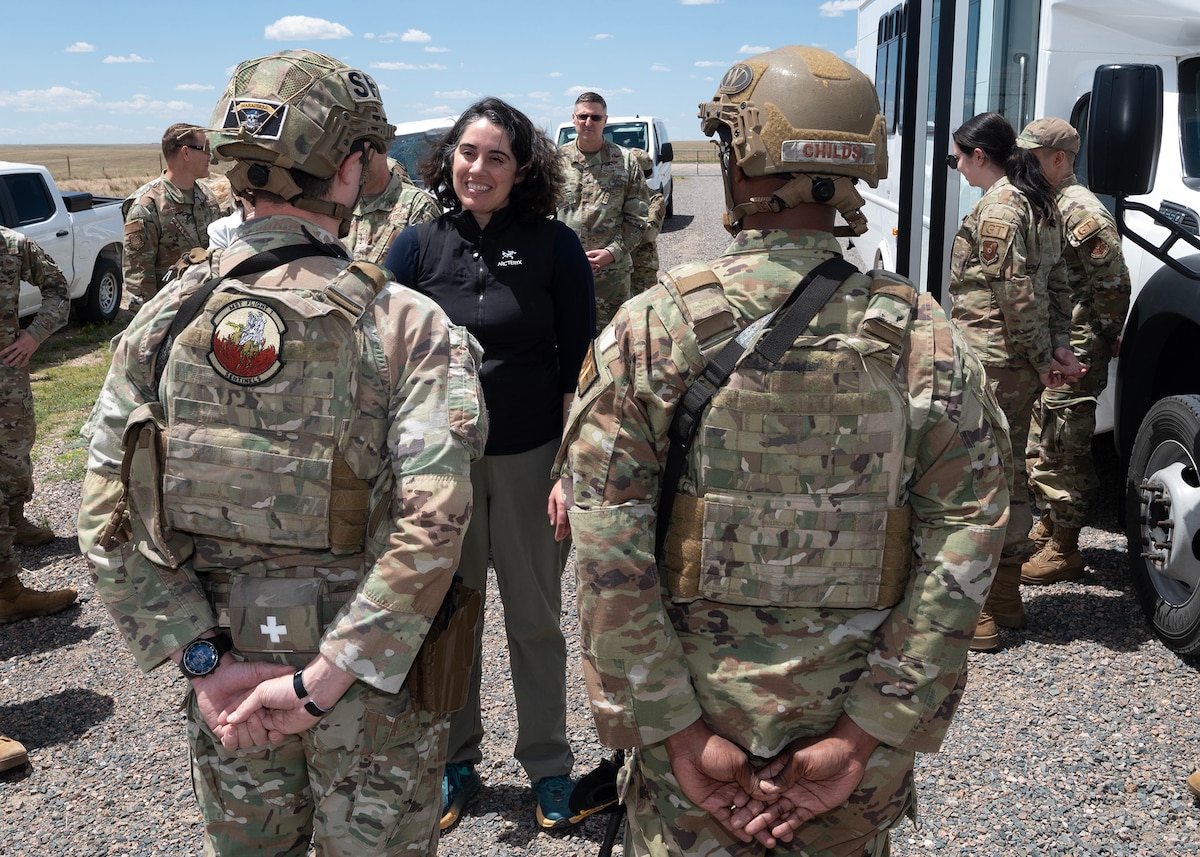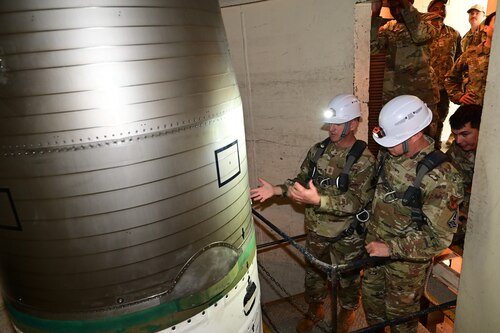Under Secretary of the Air Force Melissa Dalton, Chief Master Sgt. of the Air Force David Flosi, and several other senior leaders visited F.E. Warren Air Force Base, Wyoming, July 1-2.
The group was immersed with Airmen from 20th Air Force and the 90th Missile Wing to discuss nuclear modernization and better understand the vital role of the Intercontinental Ballistic Missile force.
Four-hundred ICBMs form the most responsive leg of the nation's nuclear triad alongside bomber and submarine-launched nuclear weapons. The geographically dispersed basing of the ICBM force, in addition to the range and speed in which it can be employed, complicates potential adversaries' decision calculus.
"The ground leg of the triad is essential," Dalton emphasized. "Its responsiveness deters potential threats by signaling that any attack on the U.S. would be impractical, self-defeating and met with severe consequences."
During the trip, all leaders agreed that while the current weapon system is reliable for now, the Air Force must prioritize a replacement to ensure effectiveness and credibility well into the future.
"Our Intercontinental Ballistic Missiles are the most responsive leg of our nation's nuclear triad. It requires sustained and fully funded investments," Flosi added. "Without these resources, we risk leaving ourselves vulnerable to 21st century threats. We must continue to prioritize these investments in order to ensure our military remains the best in the world."
The Air Force's fleet of ICBMs have remained on around-the-clock alert since 1959 with the last major recapitalization occurring in the 1980s. The current Minuteman III missiles and 450 launch facilities are set to be replaced by the increasingly accurate, secure and reliable Sentinel program.
While the Sentinel program is one of the largest and most complex programs the Air Force has ever undertaken, it will drastically improve the overall effectiveness of the nuclear triad to counter current and future strategic risks.
"Modernizing the ground-based deterrent while sustaining the Minuteman III system is a challenge that demands significant, responsible investment and a holistic approach," Dalton noted. "In the face of the nuclear modernization by our competitors, it's imperative to modernize our own force to underwrite our nation's defense and uphold our extended deterrence commitments to our allies."
After a mission brief at 20th Air Force headquarters, the group was hosted at Missile Alert Facility A-01 by missileers, defenders and a myriad of Airmen who perform other critical support functions.
First Lts. Connor Tovey and Sydney Kongquee, 319th Missile Squadron missileers, talked through a day in their life during a 24-hour shift. After a lengthy drive to the facility, the pair travels 60-70 feet underground into a capsule where they monitor their assigned launch facilities and wait for an order they hope never comes, though it's an order they're determined to execute if necessary.
Maintaining and operating the 15 missile alert facilities and various launch facilities across F.E. Warren's 9,600 square-mile missile field is a 24-hour, seven-days a week responsibility.
Flosi, who joined the Air Force in 1996 as a nuclear weapons specialist, is vividly familiar with the importance of the job.
"Our Airmen are critical to national security," Flosi said. "They are on the front lines of deterrence every single day, working tirelessly to ensure our nation is protected from any threat. Dedicated and professional Airmen are what makes our Air Force the best in the world."
Later, the group toured a launch facility, more commonly referred to as an underground missile silo. The senior leaders witnessed first-hand how a highly skilled, disciplined cadre of maintainers have kept the Minuteman III operational for more than 50 years.
Until the transition to the Sentinel program is made, the Air Force will continue to rely on these maintainers to ensure the Minuteman III remains a reliable and effective deterrent.
"After meeting these Airmen, and learning about their creativity and innovation, I've never been more confident in our military's ability to deter threats to the U.S. and our allies," Dalton said. "We owe it our Airmen to ensure that we modernize the force."









